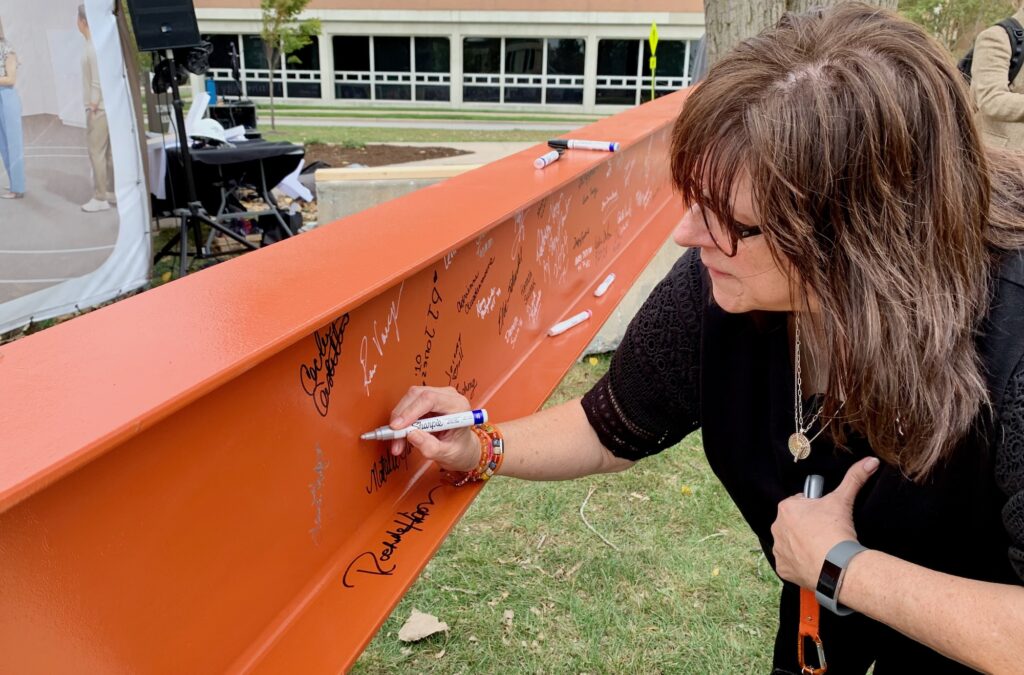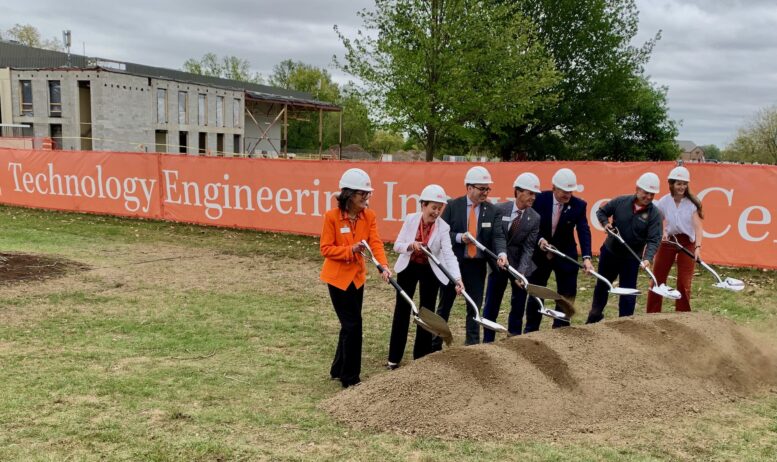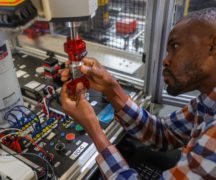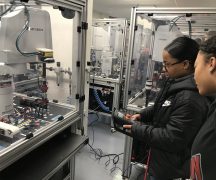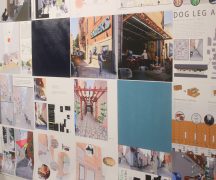By JULIE CARLE
BG Independent News
When the Industrial Education and Technology Building was built in 1971 on Bowling Green State University’s campus, it was designed to be “future-oriented.”
According to a July 22, 1971, BG News article, the then new building “will help us put into practice what we think is ahead for industrial technology to the year 2000,” said Dr. Jerry Streichler, chair of the department at the time.
Fast forward 53 years. At Friday’s groundbreaking for the renovation and expansion of the 1971 building—now to be called the BGSU Technology Engineering Innovation Center—the message was again about the future.
“The building is the physical representation of the future, state-of-the-art, advanced technologies our students need for careers” in the industry, said BGSU Board of Trustees Chair Drew Forhan ‘81.
Instead of educating students in industrial education and technology, the focus will be on newly imagined degrees in robotics, engineering, electronics and computer engineering, and mechanical and manufacturing engineering.
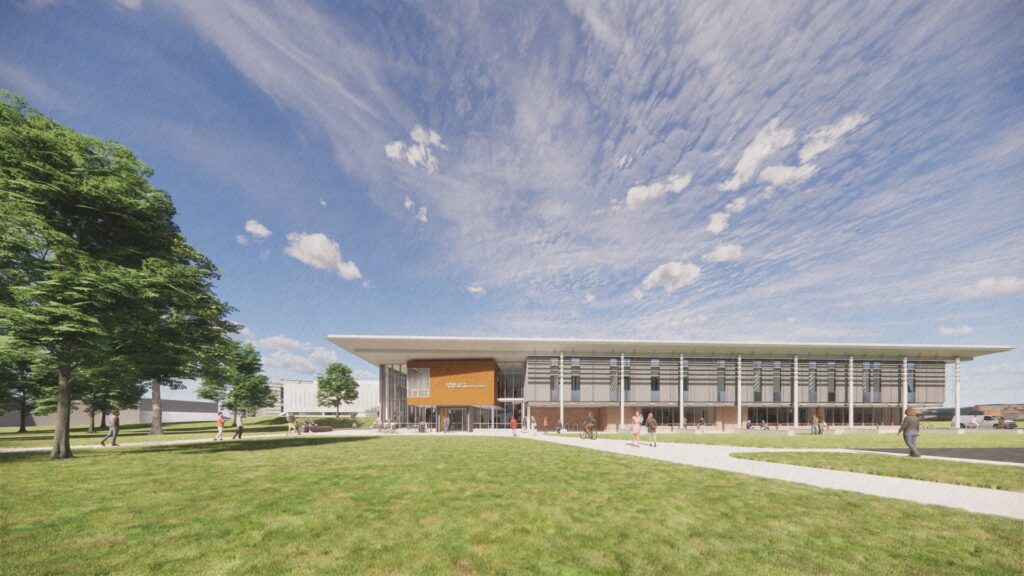
Once completed in spring 2026, the Technology Engineering Innovation Center will house seven flexible, specialized laboratories in the 24,000-square-foot addition. Collaborative spaces will support experiential, hands-on learning for students alongside faculty, alumni and industry professionals.
The center will help grow the university’s engineering program and support the state’s ever-changing advanced manufacturing industry.
Manufacturing “was a bit different” when the building opened in the 1970s, said BGSU President Rodney K. Rogers, but today’s “manufacturing is incredibly important, especially in Ohio, where it represents a $133 billion industry.”
Because automation and robotics are changing the manufacturing industry, “the building’s design will allow the right tools to be inside the labs, whether it be virtual reality, semiconductors or robotics,” said Dr. Wael Mokhtar, dean of the College of Technology, Architecture and Applied Engineering.
Industry partners will be able to send their employees to BGSU for “upskilling,” he said, and BGSU students “will enjoy a larger facility that allows them to use the latest technologies and advanced equipment—the same equipment they will use in their future careers,” he said.
“From Day One, students get to work on individual problems physically,” Rogers said about the curriculum.. “The best way to understand how things work is to play around with them, build things and do things.”
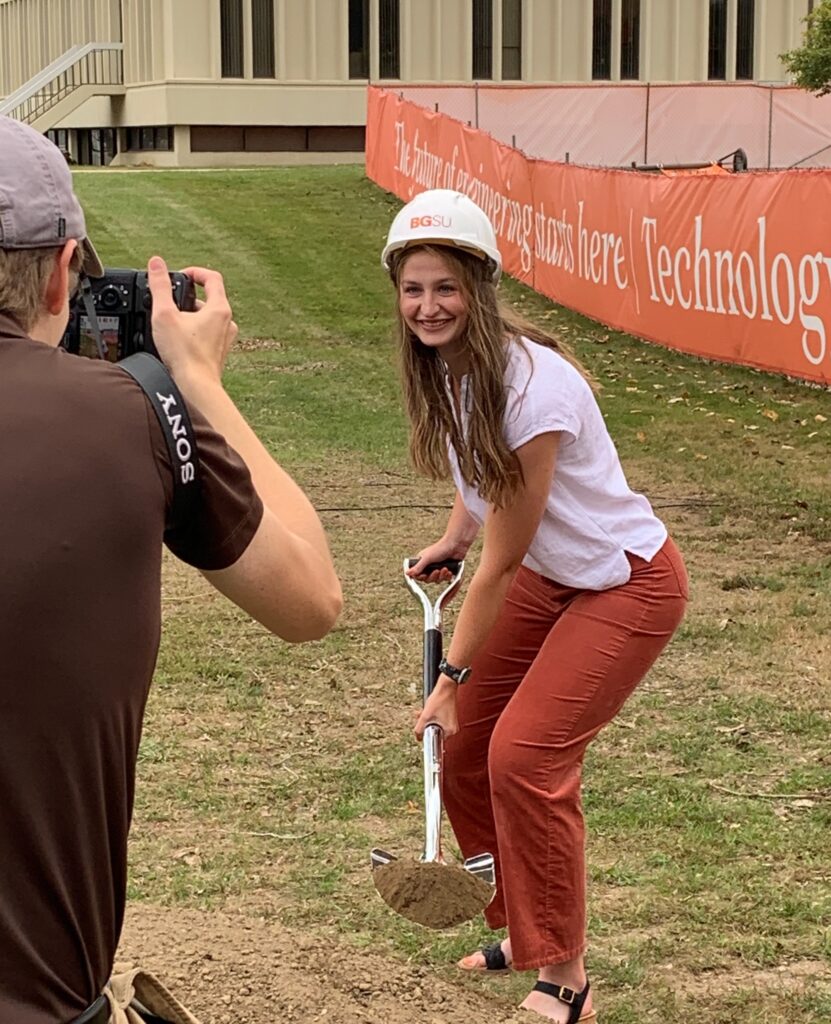
Jenna Lucas, a third-year systems engineering student from Pataskala, Ohio, was “proud to represent my program” at the groundbreaking ceremony. “It’s so exciting that the university is investing in the Engineering Technology Innovation Center,” which will enhance learning through the interactive curriculum and state-of-the-art facilities, she said.
“Today’s groundbreaking is a transformational, historic investment in the students,” said Ohio Rep. Haraz Ghanbari, who presented a commendation from the Ohio House of Representatives.
Rogers thanked the faculty and staff for helping to “reimagine how we teach engineering.”
The Technology Engineering Innovation Center is part of the BGSU Campus Master Plan 2024, which envisions the building as the start of the University’s science, technology, engineering and mathematics (STEM) corridor.
